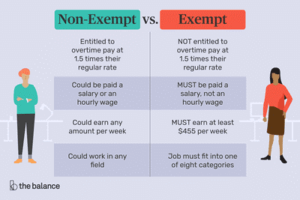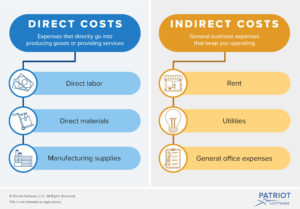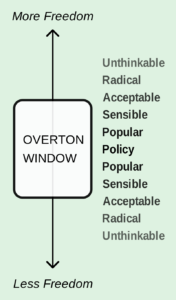I was casting around for a topic to write about. I had several candidates. Whenever I get an idea I write down the basics of it in my notebook. This happens to be a real notebook, with paper pages and a bound cover. Not a computer. I very rarely type at a moment’s notice, but I sure can pick up a pen and scribble with the best of them.
In any event what finally tipped the scales toward this topic was the NCAA selection committee’s decisions on who gets to play in March Madness (who gets to go dancing as they say) and who doesn’t. It wasn’t so much the actual selections that got my attention, as it was all the hype and fury that goes into the prognostications associated with filling out the tournament brackets and predicting the winners, losers and future match-ups.
It seems that what comes next is of more than passing interest to some people.
Being in a technology-based industry, in an increasingly technology-based world, I have been doing some reading as to what comes next in technology as well. It may seem like a stretch to compare filling out your NCAA March Madness bracket to predicting what comes next in technology industries and business sectors, but there you have it.
I have read and seen many methods used for predicting the next steps in our technological future. Some are internally focused (business focused). Some are externally focused (customer focused). I saw some that were citing universal constants and the laws of physics as the driving factors. Anything that equates physics to business always intrigues me.
But as I thought through all of the hype and hoopla surrounding predicting the future, as I stared somewhat forlornly at my unfilled NCAA bracket, I realized that while I had absolutely no idea beyond what I saw on ESPN regarding who’s who in college basketball, I had been in business and the technology industry for a while, so maybe if I relied on that instead of what others said I should rely on, I might be able to make some sense of what was coming.
Despite every pundit’s proclivity to try and make things seem complicated, I have found business to come down to, and be reasonably explained by the holy trinity, as it were, of business: Good, Fast, Cheap. I think these are the factors that affect and in effect, can be used to predict the future.
Simply put, they are: Good, or quality. Fast or speed of acquisition or delivery. And Cheap, how much you are willing to pay.
Now I agree that there are other influences, such as governmental regulation, and social and environmental consciousness, and even marketing and advertising, but I think Good, Fast, Cheap dominate the decision and prediction landscape. I’ll look at a couple of disparate industries to see if these ideas hold true.
The auto industry is always one of my favorite industries to look at. It has changed from a labor intensive “we’ll tell you what kind of car you’re going to buy”, to an automated, highly competitive customer driven, “We’ll tell you what kind of car you’re going to make if you want our business” industry. That’s what makes it fun to look at.
It is well known that there are market segments within both the automotive industry and its customer base. These tiers are based on car size and pricing levels. Smaller economy cars, all the way up to larger, more luxurious cars. This is because not everyone has the same level of “Cheap” or price. However, there are various sub-markets that do seem to behave similarly based on this factor.
Fast, for the most part, is going to be a given for cars. Dealerships abound, and interestingly enough seem to occur in close proximity to each other. This means that you can go in, compare products relatively easily, and select and drive home with your purchase. You can’t get much faster than immediate gratification.
That leaves Good, or quality as to what I would expect the primary differentiator to be, at least for now within the automotive industry. This is where things can get interesting. If you can’t spend any more money than you can afford for a car, and you can’t get it any faster than now, the perceived quality of the car will be one of the major, if not deciding factor on what you buy.
Yes, I know design and style, etc. are going to come into play. Have you noticed how similar in appearance cars within the same market segment look. If you don’t think so, look again.
It is interesting (at least to me) that the New York Times noted that General Motors first offered a Three-Year bumper to bumper warranty in 1989. https://www.nytimes.com/1988/09/17/style/consumer-s-world-for-1989-new-cars-and-warranties-come-in-all-lengths.html
Now such warranties can extend to six-years and in some instances 10-years, and I would suggest that they are viewed as a competitive advantage / disadvantage capability.
Now Elon Musk and Tesla have created a very high quality, electric car, and they are challenging some of the status quo in the industry. And the industry is reacting, as all competitors work to bring out competitive electric models as quickly as possible. But again, I would position that the economics of quality will be the driving factor of what the future holds for the automotive industry.
Now I’d like to look at the technology industries. I’ll focus somewhat on communications and networking, but I think much of the topic will be applicable across most technology industries.
Good, or Quality used to be the driving force in communications. Reliability, redundancy, etc. were the required thresholds to cross. But they cost money and they took time. People learned that they could get “Good Enough” for a whole lot less than what they paid for Good. I have referred to this as the race to the bottom. How low a quality for how low a price was acceptable. It turns out in retrospect, pretty low.
It seems now that there are generations of people who have never known high quality communications, or anything other than disposable platforms and devices, so they have no baseline to compare to. To them Good Enough is all they have ever had, so it is acceptable. So that leaves Fast and / or Cheap as the driving forces for the networking future. Maybe.
I also think that Cheap has also run its course in communications. Who here remembers when communications providers would “give” you a mobile phone as part of your service agreement? They don’t do that anymore. In fact, it seems that they have now established an upper boundary for what people will pay for a phone, in addition to their service contract. That limit seems to have been explored by Apple and its iPhone X at around One Thousand Dollars. https://www.theverge.com/2018/8/21/17763322/iphone-x-galaxy-note-9-smartphone-pricing-2018
That brings us to Fast, or speed of availability. It has been approximately Ten years since the last generation of wireless capability (4G) went into trial and delivery to the market. https://en.wikipedia.org/wiki/4G 5G is now just hitting the market as well, but probably won’t see ubiquitous coverage for another year or two. The speed we are talking about here is measured in years, if not decades.
The last major evolution / revolution in non-wireless communications, be it the analog to digital, digital to Internet Protocol, or the advent of cable providers entering the non-TV communications market, has also been years if not decades in the past.
So where does that leave us? The Good (quality) of communications has already been taken down. Can it go lower? Maybe, maybe not. The Cheap of communications has already been taken down, hit the floor, and started to bounce back up. This is obviously in response to the communications providers desire to continue to make money and stay in business. The Fast of communications has never been that fast to begin with.
I think it is going to be a combination of “Good” and “Cheap”. Quality is already low. However, if we are to believe the new applications and uses of communications, quality will probably have to come back up. I don’t know about you, but I don’t think I want my self-driving car operating on the quality of networks that we have come to accept as “Good Enough”. Either that or the definition of Good Enough is going to have to be revised upwards, drastically.
Basically, this means that people will be expecting more, but probably will not be willing to pay more for it. The past technology iterations will have already taught them this behavior.
Cheap, as I said has already hit the bottom and seems to be coming back up. But not everyone will want or need the “luxury” service. Many will want, or only be able to afford the “Economy” service. I think you will see in far more granularity than is available now, a tiering, or set of communication strata put in place, very similar to what we see with the automotive industry: Luxury models to Economy models.
The issue will be that how do you create communications networks able to deliver Luxury to Economy levels, that are priced at levels that are already ingrained in the user’s market segment? That would mean that the capability to deliver Luxury would have to be built, but the ability to deliver Cheap, where desired or required would have to be available.
I think the technology to be able to deliver this type of capability is in development now. I don’t think the “Cheap” capability of the service providers being able to make money on that type of technology-based capability has quite been worked out yet. It will cost the providers a lot of money to build this capability. This will probably engender a price that their end user customers are probably not willing to spend. That and it will probably a fair amount of time before the technologies are truly available. I think we have an economically induced wait in order to see what’s next, at least in communications.



